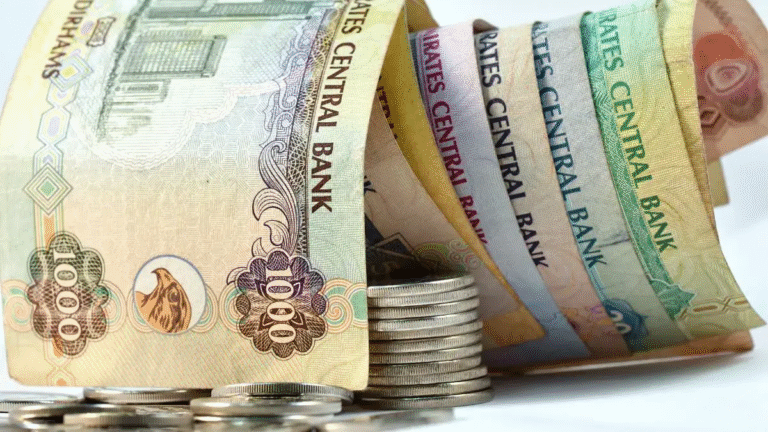The UAE’s top 10 listed banks have posted a strong first quarter marked by healthy income growth, cost optimisation, and strategic repositioning —despite a backdrop of global economic uncertainty and regional interest rate adjustments.
According to the latest UAE Banking Pulse from Alvarez & Marsal (A&M), aggregate net income of the 10 banks for the quarter ending March 2025 jumped by 8.4 per cent quarter-on-quarter (QoQ) to Dh 22.2 billion. This performance was powered largely by a substantial 59.3 per cent drop in impairment charges and an 18 per cent surge in fee and commission income. Though net interest income (NII) contracted by 2.1 per cent due to narrowing margins, overall profitability improved: return on equity (RoE) rose to 18.6 per cent, and return on assets (RoA) climbed to 2.1 per cent.
The banks also reported a notable 3.6 per cent QoQ growth in loans and advances, largely led by corporate and wholesale lending, which increased by 5.1 per cent. On the deposit side, a 5.8 per cent QoQ rise—propelled by a robust 7.6 per cent increase in current and savings accounts (CASA)—outpaced loan growth. Consequently, the loan-to-deposit ratio (LDR) eased to 74.7 per cent, indicating bolstered liquidity across the sector.
The Q1 snapshot reveals a sector exercising prudent cost control. Operating expenses dipped by 7.8 per cent, pushing the cost-to-income (C/I) ratio down by 234 basis points to 28.2 per cent—its lowest level in four quarters. Digital transformation initiatives and process automation appear to be playing a key role in boosting operational efficiency.
Despite interest margin pressures — with net interest margin (NIM) shrinking by 15 basis points to 2.52 per cent — the sector’s resilience is reflected in its improving asset quality. The cost of risk (CoR) fell to 0.29 per cent, while the non-performing loan (NPL) ratio dropped to 3.2 per cent, supported by healthier loan recoveries and a stronger lending profile. Coverage ratios also improved, climbing to 110.5 per cent, offering additional buffer against potential shocks.
Strategic consolidation appears to be back in motion. Emirates NBD has initiated a full acquisition of Emirates Islamic, a move seen as a precursor to regional expansion. This signals a renewed confidence among top-tier banks in exploring inorganic growth opportunities amidst a more stabilised operating environment.
The top 10 listed banks assessed in the report include First Abu Dhabi Bank, Emirates NBD, Abu Dhabi Commercial Bank, Dubai Islamic Bank, Mashreq Bank, Abu Dhabi Islamic Bank, Commercial Bank of Dubai, National Bank of Fujairah, National Bank of Ras Al-Khaimah, and Sharjah Islamic Bank. These institutions collectively shape over 80 per cent of the UAE’s banking activity, providing a reliable proxy for sectoral trends.
“UAE banks have entered 2025 on solid footing. Despite margin pressures from rate cuts, we saw strong fee income and reduced impairments lifting overall profitability. This performance underlines the sector’s adaptability and strategic focus,” Asad Ahmed, managing director and head of Financial Services at A&M, observed.
Sam Gidoomal, managing director and head of A&M’s Financial Services in the Middle East, added, “With evolving financial dynamics, our enhanced M&A analysis helps C-suite leaders understand valuation shifts and peer performance, setting the stage for sharper strategic decisions.”
Key performance indicators reinforce the strength of the quarter. While yield on credit declined from 11.9 per cent to 10.9 per cent amid softer lending rates, the cost of funds also improved—dropping to 3.9 per cent from 4.4 per cent—helping to cushion margin pressure. Meanwhile, non-interest income rose to 35.7 per cent of total operating income, reflecting diversification efforts beyond traditional lending.
From a capital perspective, the sector remains well-buffered with a capital adequacy ratio (CAR) of 16.6 per cent—comfortably above regulatory minimums—despite a slight decline from the previous quarter. This gives banks ample room to support future loan growth, M&A activity, and dividend payouts.
This upbeat performance comes as the broader UAE banking industry continues to benefit from macroeconomic stability, steady government reforms, and a thriving business environment. The Central Bank of the UAE forecasts GDP growth of around 5 per cent in 2025, with non-oil sectors driving expansion—further supporting credit demand.
According to data from the UAE Banks Federation, total banking sector assets crossed Dh 4.2 trillion as of March 2025, up nearly 12 per cent year-on-year. Lending to SMEs and green finance initiatives have also seen a notable uptick, as banks align with the nation’s sustainability goals and entrepreneurship agenda.
Source: Khaleej Times

